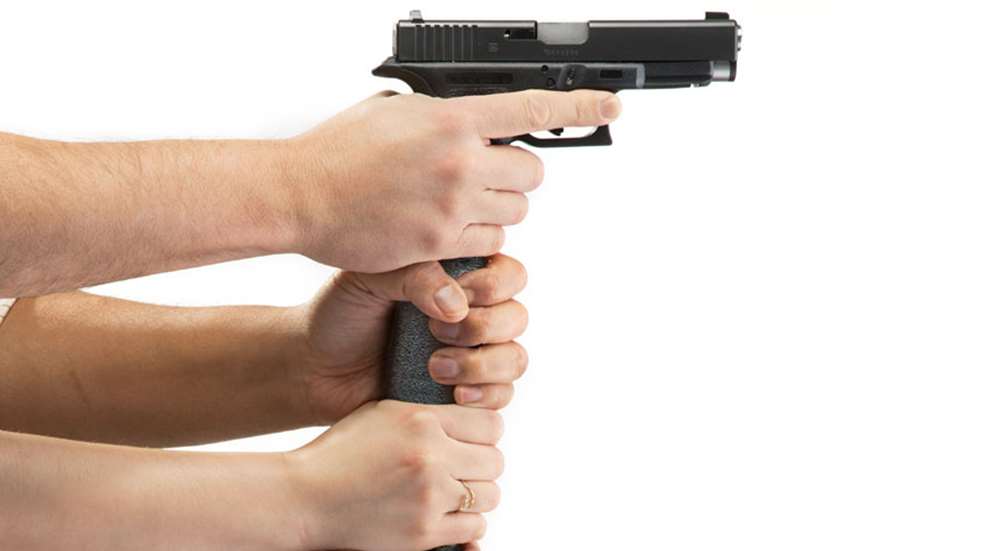
 The Problem:
The Problem:
In general conversation with members of your gun club and in reading about different types of shooting, you’ve noticed one point that comes up frequently is gun fit. It seems like everyone knows something about the subject, but you fail to see the importance, whether it is a long gun or a handgun. People shoot guns every day that they bought without even considering fit. Are you missing something, or is gun fit a figment of some people’s imagination?
The Solution:
Gun fit is a nebulous term that has many meanings. At best, I consider it an inexact science with all of the variables that can be factored in, regardless of whether it pertains to a long gun or a handgun. In most cases, the average gun buyer can shoot whatever they buy off the shelf because the gun is usually designed to fit the “average person,” which manufacturers define from studies that they or others have done. That doesn’t necessarily mean the buyer can hit their target with any degree of regularity, but it usually means they can load it and fire it, hopefully with a satisfactory degree of safety.
What fitting the gun to the shooter accomplishes is to capitalize on the shooter’s physical build and natural attribute of eye/hand coordination in getting the muzzle of the gun in the correct relation to the target to make a successful hit. Keep in mind, the objective of shooting is hitting the target, not just putting off a blast in the general direction of the target, resulting in little more than making some noise.
With a combat or defensive handgun, the idea is to seat the gun, centered in the web of the hand so the muzzle points in the same direction as the index finger when either are pointed at a target. The index finger should be able to reach the trigger with normal effort, pull the trigger as many times as desirable, hitting the target accurately, if the gun is properly fit to the hand of the shooter. The benefit is quick target acquisition through hand/eye coordination since the muzzle will be pointing where the eye is looking.
All that said, we are quite adaptable. With a little practice, a person can learn to shoot and hit with an ill-fitting gun, although not as fast or efficient in many cases depending on the true fit and time spent practicing the adaptation. The bottom line is how we get the muzzle pointed at the intended target and the ability to pull the trigger, firing the gun without moving the muzzle away from the target. If speed and accuracy are a factor, proper fit is a benefit.
Rifle fit follows in this vein in that shooting position often dictates stock length and consistent head position in relation to the sights. Natural point-of-aim, being able to support the rifle pointing the muzzle at the center of the target with minimal muscle tension in the body, is a highly desired factor in successfully shooting a rifle. Ideal stock length varies with the chosen position to shoot the rifle. For example, when shooting your favorite AR-15 from a bladed position as in High-Power competition, the stock length is necessarily longer than if you were facing and addressing the target with the rifle mounted closer to the center of the upper torso.
With the scoped rifle traditionally used for hunting, it is desirable to have the head positioned so the eye is looking through the center of the scope’s ocular lens with sufficient eye relief to get a full view of the target area and avoid contact with the scope during recoil. This is dependent on the comb height where the cheek rests and, to a degree, the length of the stock. The shooting position becomes the variable, in that shooting from the prone position versus shooting from a bench changes the head position on the stock and relation to the scope considerably for most people. The idea is to set the rifle up for the position it is most likely to be used in and make the appropriate allowances in adapting to shooting in other positions.
Shotgun fit takes some trial and error to get right. A good fitter can reduce the time in getting a consistent mount with the barrel pointed where the shooter is looking. Understanding the concept will at least put you on the right track.
Since the shotgun has no rear sight as a point of reference, the position of the eye relative to the barrel fills that function. The shape and length of the stock is fitted to the shooter, positioning the eye vertically and horizontally in relation to the barrel. When the gun is mounted against the shoulder and cheek, the shooter should be looking down the rib or barrel while focusing on the bird.
Here again, there are variables. We humans are adaptable if we understand the end game of what we need to achieve. Proper fit of the gun to the shooter does improve consistent performance in hitting the intended target. With the variety of hand sizes and body types of those shooting guns of any type, size and fit does matter when striving to achieve the highest levels of success.





































